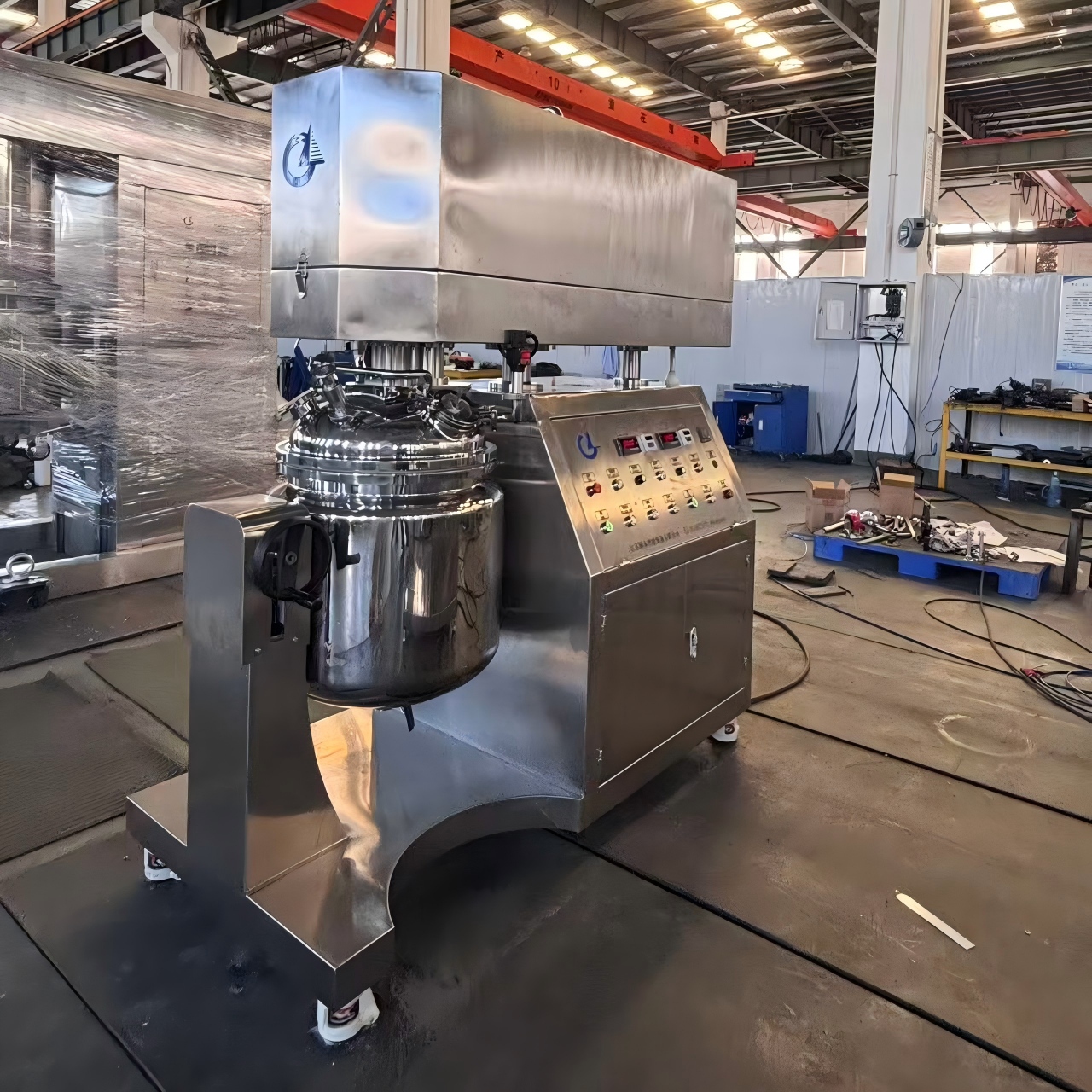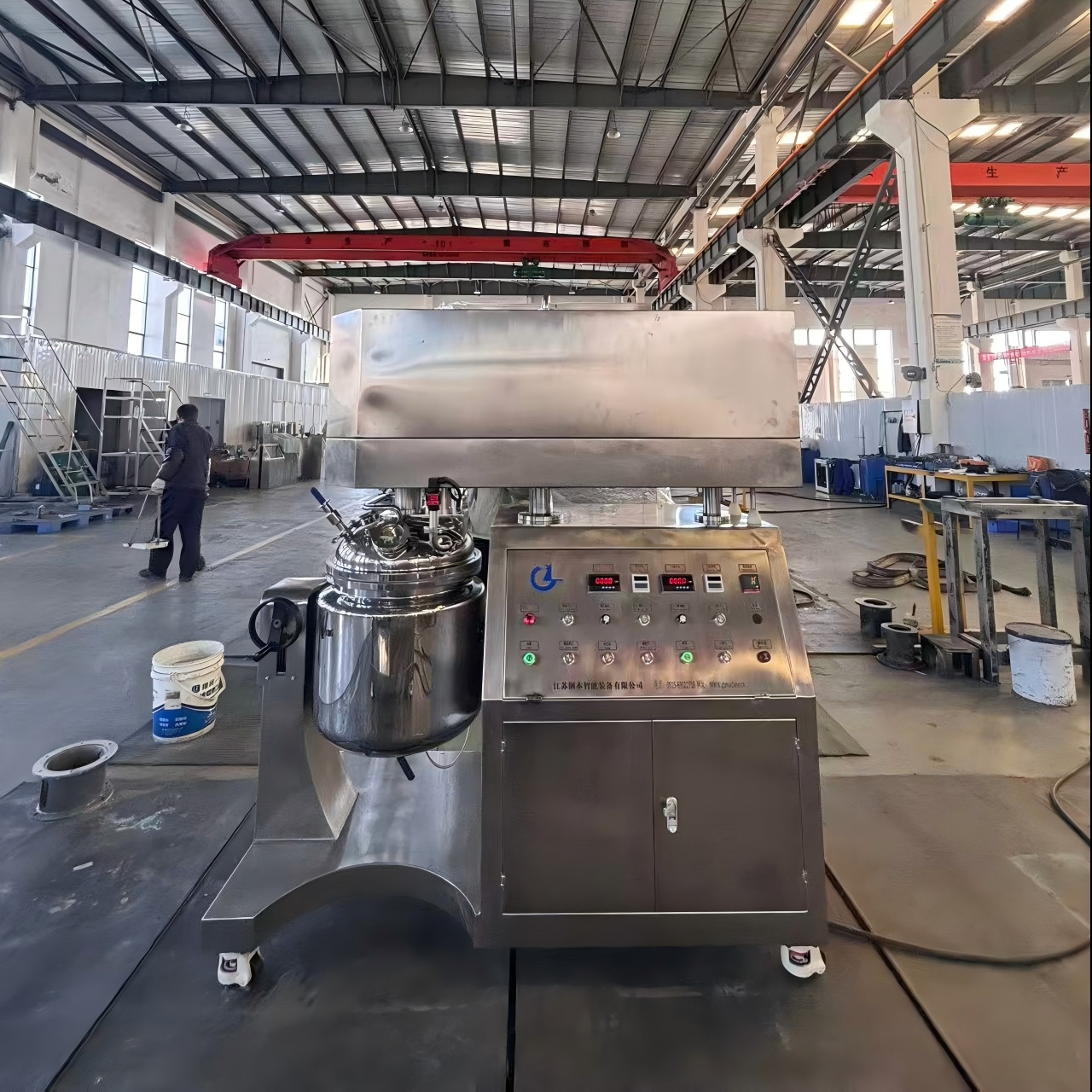Vacuum Emulsifying Mixer: An Indispensable Tool in Fine Chemical Production. Unveiling the 2025 Latest Mode
Vacuum Emulsifying Mixer: A Cornerstone for Fine Chemical Production – Unveiling the 2025 Latest Model
In the realm of fine chemical production, where precision, consistency, and product stability directly define manufacturing success, the vacuum emulsifying mixer stands as an irreplaceable cornerstone technology. It excels at the precise, efficient blending of diverse materials—from viscous pastes to multi-phase formulations—while upholding strict quality standards. The 2025 latest model of this equipment marks a significant leap forward, integrating cutting-edge innovations to address the evolving demands of modern fine chemical industries, from lab-scale R&D to large-scale industrial production.
Core Working Principle: How It Delivers Homogeneous, Stable Formulations
At its core, the vacuum emulsifying mixer operates in a sealed vacuum environment, leveraging two key mechanisms to achieve superior mixing results:
1.Vacuum-Powered Purity: The vacuum environment eliminates dissolved air and moisture from the mixing chamber, preventing oxidation, foam formation, and contamination—critical for sensitive fine chemical formulations (e.g., oxygen-sensitive pharmaceuticals, shear-sensitive cosmetics).
2.High-Shear Force Homogenization: Equipped with a high-speed rotor-stator system, the mixer generates intense mechanical energy. As materials pass through the narrow gaps between the rotating rotor and fixed stator, they undergo rapid shearing, centrifugal extrusion, impact, and tearing. Through repeated cycles of this process, the mixer breaks down agglomerates, disperses one or multiple phases into a continuous phase, and ultimately produces a:
Homogeneous mixture with no stratification
Bubble-free texture (critical for clear formulations like serums or coatings)
Fine particle size distribution (typically 200nm–2μm), ensuring consistent product performance.
Key Innovations of the 2025 Latest Model
The 2025 model builds on its predecessors’ strengths while introducing targeted upgrades to enhance efficiency, precision, and adaptability—addressing the most pressing pain points of fine chemical manufacturers:
1. Enhanced Vacuum System for Ultra-Low Oxygen Environments
The upgraded vacuum pump delivers a deeper, more stable vacuum level (down to -0.098MPa), a critical improvement for:
Protecting oxygen-sensitive materials (e.g., vitamin-rich cosmetic serums, oxidation-prone pharmaceutical APIs) from degradation.
Minimizing contamination risks, as the sealed vacuum environment prevents external airborne particles from entering the mixing chamber.
Ensuring longer shelf life for end products, as reduced air content slows down spoilage or chemical breakdown.
2. High-Shear Homogenizer for Ultra-Fine Emulsions
Redesigned high-speed homogenizer (up to 4,500 RPM) generates stronger shear forces, enabling:
Efficient breakdown of tough agglomerates (e.g., pigment clusters in paints, active ingredient clumps in ointments).
Creation of ultra-fine emulsions (particle size <100nm in some cases), which improves product texture (e.g., luxurious smoothness in creams) and bioavailability (for pharmaceutical formulations, where smaller particles enhance API absorption).
Faster mixing cycles—reducing batch time by up to 20% compared to older models, boosting overall production efficiency.
3. Intelligent Precision Control for Batch Consistency
The 2025 model features a next-gen PLC control system with a touchscreen HMI, allowing operators to:
Fine-tune critical parameters (vacuum level, mixing speed, temperature, and time) with ±0.5°C temperature accuracy and ±5 RPM speed precision.
Store up to 100+ custom recipes, ensuring identical results across batches—essential for large-scale fine chemical production, where consistency is non-negotiable.
Monitor real-time data (e.g., vacuum pressure, motor load) and receive alerts for deviations, minimizing human error and reducing defective batches.
4. Energy-Efficient Design for Sustainability
Optimized motor and drive systems (equipped with variable-frequency drives) reduce energy consumption by 15–20% while maintaining peak performance. This upgrade:
Lowers long-term operational costs, a key advantage for high-volume manufacturers.
Aligns with global sustainability goals by cutting the carbon footprint of production processes—critical for brands prioritizing eco-friendly manufacturing.
5. Modular Construction for Versatility & Scalability
The mixer’s modular design offers unmatched flexibility for diverse fine chemical applications:
Customizable components: Optional jacketed tanks (for temperature-sensitive materials), CIP/SIP systems (for sterile pharmaceutical production), or inline homogenizers (for continuous processing).
Scalable capacities: Ranges from 5L (ideal for laboratory R&D, e.g., testing new paint formulations) to 6,000L (for industrial-scale production, e.g., bulk cosmetic cream manufacturing).
Easy retrofitting: Modular parts can be added or replaced without overhauling the entire system, supporting business growth from small-batch to mass production.
6. Enhanced Safety Features for Operator & Equipment Protection
Safety is integrated into every design detail, including:
Overpressure protection valves: Prevent damage from sudden pressure spikes in the vacuum chamber.
Emergency stop interlocks: Halt operation instantly if the mixer door is opened or a parameter exceeds safe limits.
Leak detection sensors: Alert operators to vacuum or material leaks, avoiding spills and ensuring a safe working environment.
Explosion-proof options: Available for handling flammable materials (e.g., solvent-based coatings, certain chemical intermediates), meeting ATEX or NEC hazardous location standards.
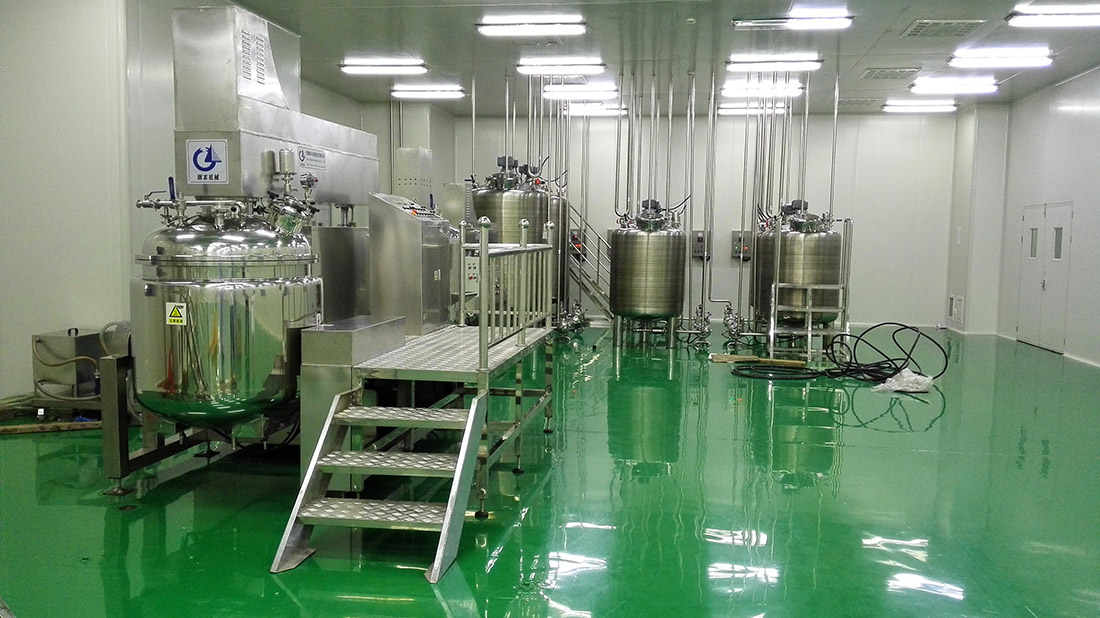
Key Innovations of the 2025 Latest Model
The 2025 model builds on its predecessors’ strengths while introducing targeted upgrades to enhance efficiency, precision, and adaptability—addressing the most pressing pain points of fine chemical manufacturers:
1. Enhanced Vacuum System for Ultra-Low Oxygen Environments
The upgraded vacuum pump delivers a deeper, more stable vacuum level (down to -0.098MPa), a critical improvement for:
Protecting oxygen-sensitive materials (e.g., vitamin-rich cosmetic serums, oxidation-prone pharmaceutical APIs) from degradation.
Minimizing contamination risks, as the sealed vacuum environment prevents external airborne particles from entering the mixing chamber.
Ensuring longer shelf life for end products, as reduced air content slows down spoilage or chemical breakdown.
2. High-Shear Homogenizer for Ultra-Fine Emulsions
Redesigned high-speed homogenizer (up to 4,500 RPM) generates stronger shear forces, enabling:
Efficient breakdown of tough agglomerates (e.g., pigment clusters in paints, active ingredient clumps in ointments).
Creation of ultra-fine emulsions (particle size <100nm in some cases), which improves product texture (e.g., luxurious smoothness in creams) and bioavailability (for pharmaceutical formulations, where smaller particles enhance API absorption).
Faster mixing cycles—reducing batch time by up to 20% compared to older models, boosting overall production efficiency.
3. Intelligent Precision Control for Batch Consistency
The 2025 model features a next-gen PLC control system with a touchscreen HMI, allowing operators to:
Fine-tune critical parameters (vacuum level, mixing speed, temperature, and time) with ±0.5°C temperature accuracy and ±5 RPM speed precision.
Store up to 100+ custom recipes, ensuring identical results across batches—essential for large-scale fine chemical production, where consistency is non-negotiable.
Monitor real-time data (e.g., vacuum pressure, motor load) and receive alerts for deviations, minimizing human error and reducing defective batches.
4. Energy-Efficient Design for Sustainability
Optimized motor and drive systems (equipped with variable-frequency drives) reduce energy consumption by 15–20% while maintaining peak performance. This upgrade:
Lowers long-term operational costs, a key advantage for high-volume manufacturers.
Aligns with global sustainability goals by cutting the carbon footprint of production processes—critical for brands prioritizing eco-friendly manufacturing.
5. Modular Construction for Versatility & Scalability
The mixer’s modular design offers unmatched flexibility for diverse fine chemical applications:
Customizable components: Optional jacketed tanks (for temperature-sensitive materials), CIP/SIP systems (for sterile pharmaceutical production), or inline homogenizers (for continuous processing).
Scalable capacities: Ranges from 5L (ideal for laboratory R&D, e.g., testing new paint formulations) to 6,000L (for industrial-scale production, e.g., bulk cosmetic cream manufacturing).
Easy retrofitting: Modular parts can be added or replaced without overhauling the entire system, supporting business growth from small-batch to mass production.
6. Enhanced Safety Features for Operator & Equipment Protection
Safety is integrated into every design detail, including:
Overpressure protection valves: Prevent damage from sudden pressure spikes in the vacuum chamber.
Emergency stop interlocks: Halt operation instantly if the mixer door is opened or a parameter exceeds safe limits.
Leak detection sensors: Alert operators to vacuum or material leaks, avoiding spills and ensuring a safe working environment.
Explosion-proof options: Available for handling flammable materials (e.g., solvent-based coatings, certain chemical intermediates), meeting ATEX or NEC hazardous location standards.
Wide-Ranging Applications in Fine Chemical Production
The 2025 vacuum emulsifying mixer’s versatility makes it a staple across key fine chemical sectors, addressing unique production needs:
1. Cosmetics & Personal Care
Ideal for formulating creams, lotions, serums, sunscreens, and hair care products. Its ability to create stable emulsions and fine particle dispersions ensures:
Luxurious texture (no gritty or uneven consistency).
Uniform distribution of active ingredients (e.g., hyaluronic acid, SPF filters) for consistent efficacy.
2. Pharmaceuticals
Critical for producing ointments, gels, suspensions, and topical medications. The mixer’s sterile design and precise control ensure:
Sterility compliance (when paired with SIP systems) to meet GMP standards.
Uniform API particle size, which directly impacts dosage accuracy and therapeutic effect.
3. Food & Beverage (Fine Chemical Subsector)
Used for high-quality emulsified products like gourmet sauces, dairy spreads (e.g., nut butters), and functional beverages. It ensures:
No phase separation (e.g., preventing oil separation in salad dressings).
Preservation of nutritional integrity (the gentle yet efficient mixing avoids heat damage to vitamins or probiotics).
4. Industrial Chemicals
Perfect for paints, coatings, adhesives, and specialty chemicals. The high-shear capability enables:
Uniform dispersion of pigments or fillers (e.g., titanium dioxide in white paints), ensuring consistent color and coverage.
Stable formulations (e.g., preventing sedimentation in adhesives), improving product performance and shelf life.
Why the 2025 Model Is a Game-Changer for Fine Chemical Production
The 2025 latest vacuum emulsifying mixer isn’t just an upgrade—it’s a strategic tool for fine chemical manufacturers looking to:
Elevate product quality: Ultra-fine emulsions, minimal contamination, and batch consistency set new standards for end products.
Boost efficiency: Faster mixing cycles, energy savings, and recipe automation reduce costs and increase output.
Stay adaptable: Modular design and scalable capacities support evolving production needs, from R&D to mass manufacturing.
Ensure compliance: Enhanced safety features and precision control align with global regulatory standards (GMP, FDA, ATEX).
In an industry where innovation and quality are inseparable, the 2025 vacuum emulsifying mixer reinforces its role as an indispensable technology—empowering manufacturers to push the boundaries of fine chemical production.
News
- Latest News
- Solutions
- FAQ
Recommend Products
-
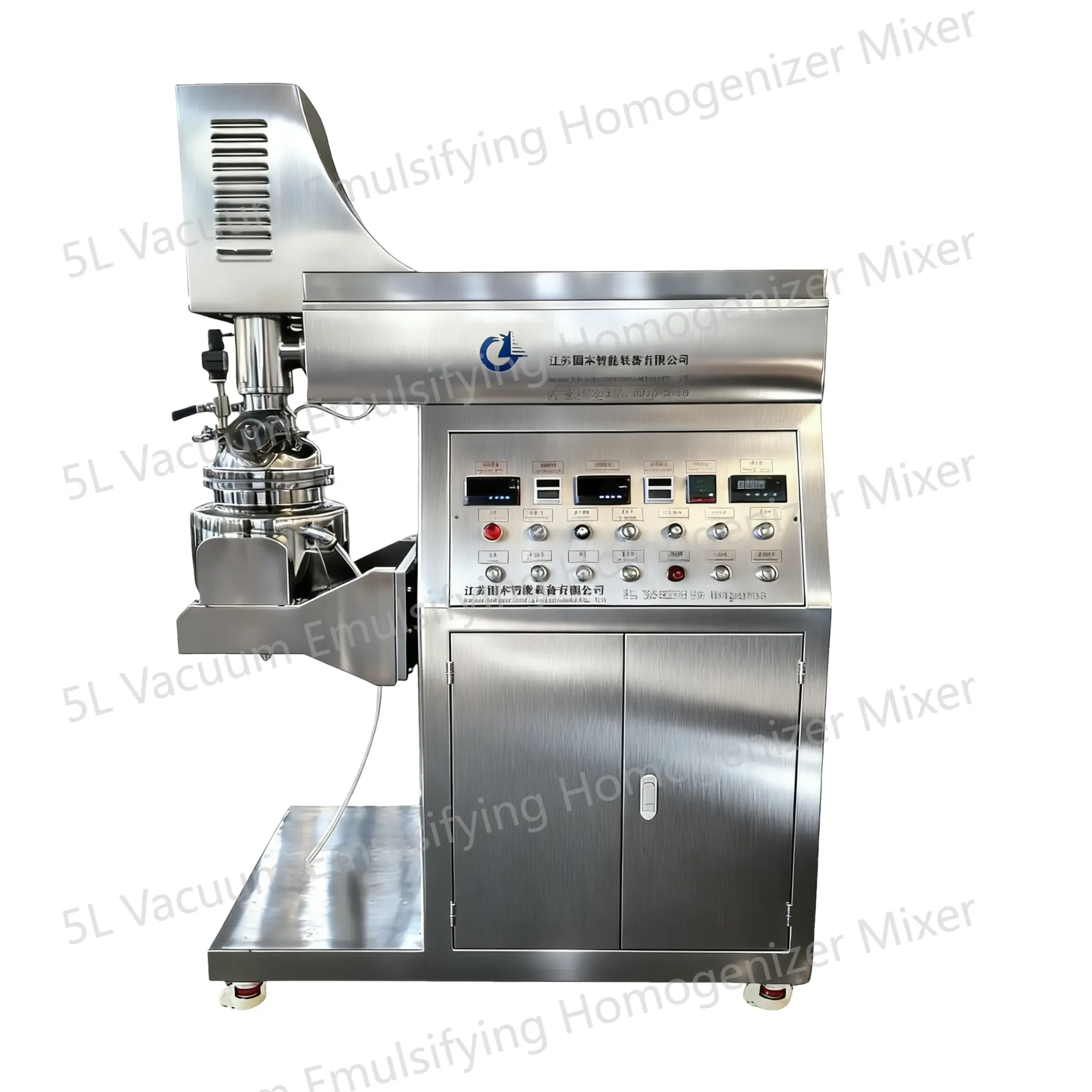 5L Vacuum Emulsifying Homogenizer Mixer
5L Vacuum Emulsifying Homogenizer MixerThe 5L vacuum emulsifying mixer is a device designed for emulsifying and mixing various substances in a vacuum environment. This equipment is equipped with a mixing tank with a capacity of 5 liters and is widely applied in industries such as food, pharmaceuticals, cosmetics, and pesticides.
-
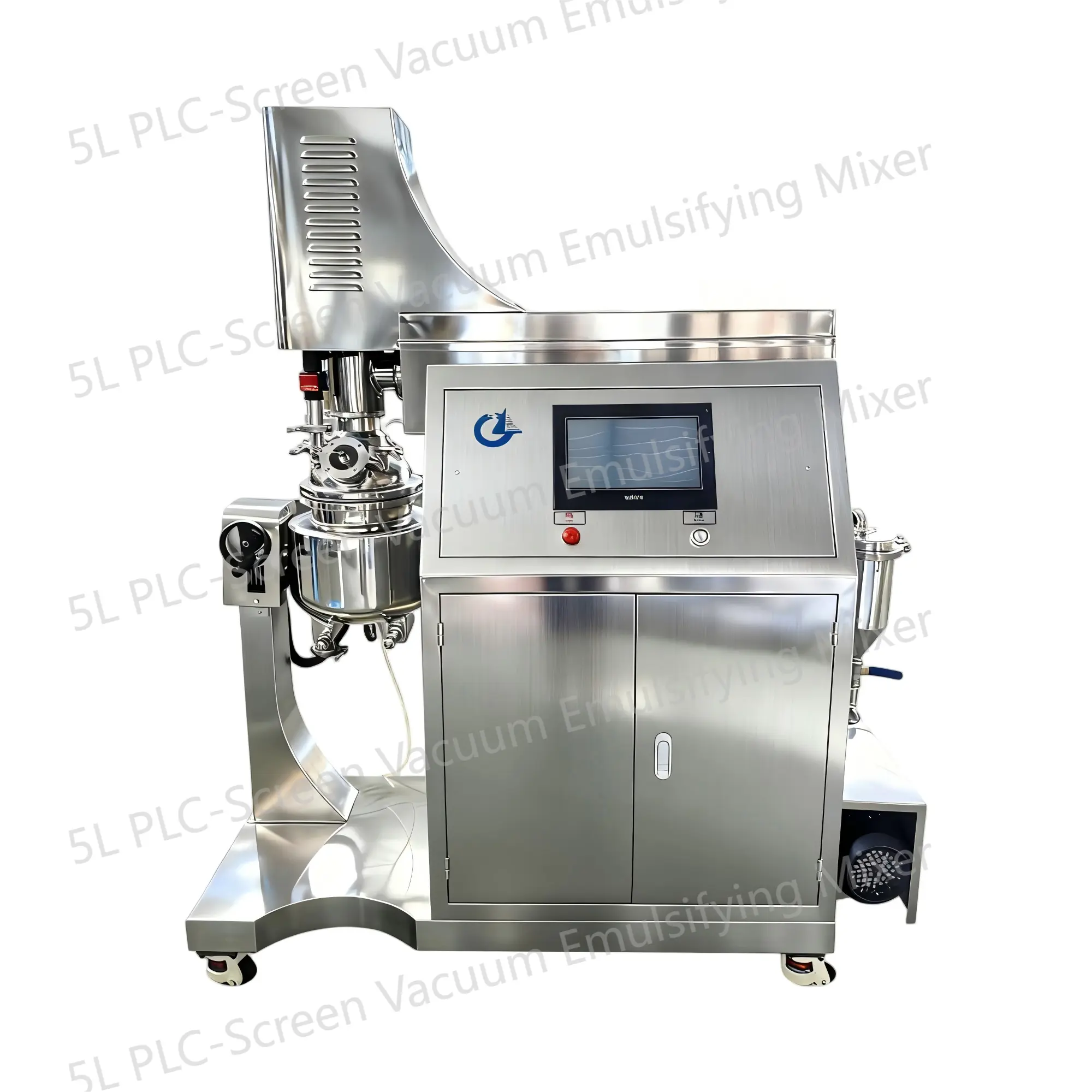 5L PLC-Screen Vacuum Emulsifying Mixer
5L PLC-Screen Vacuum Emulsifying MixerThe 5L PLC-Screen Vacuum Emulsifying Mixer is a device designed for emulsifying and mixing various substances in a vacuum environment. This equipment is equipped with a mixing tank with a capacity of 5 liters and is widely applied in industries such as food, pharmaceuticals, cosmetics, and pesticides.
-
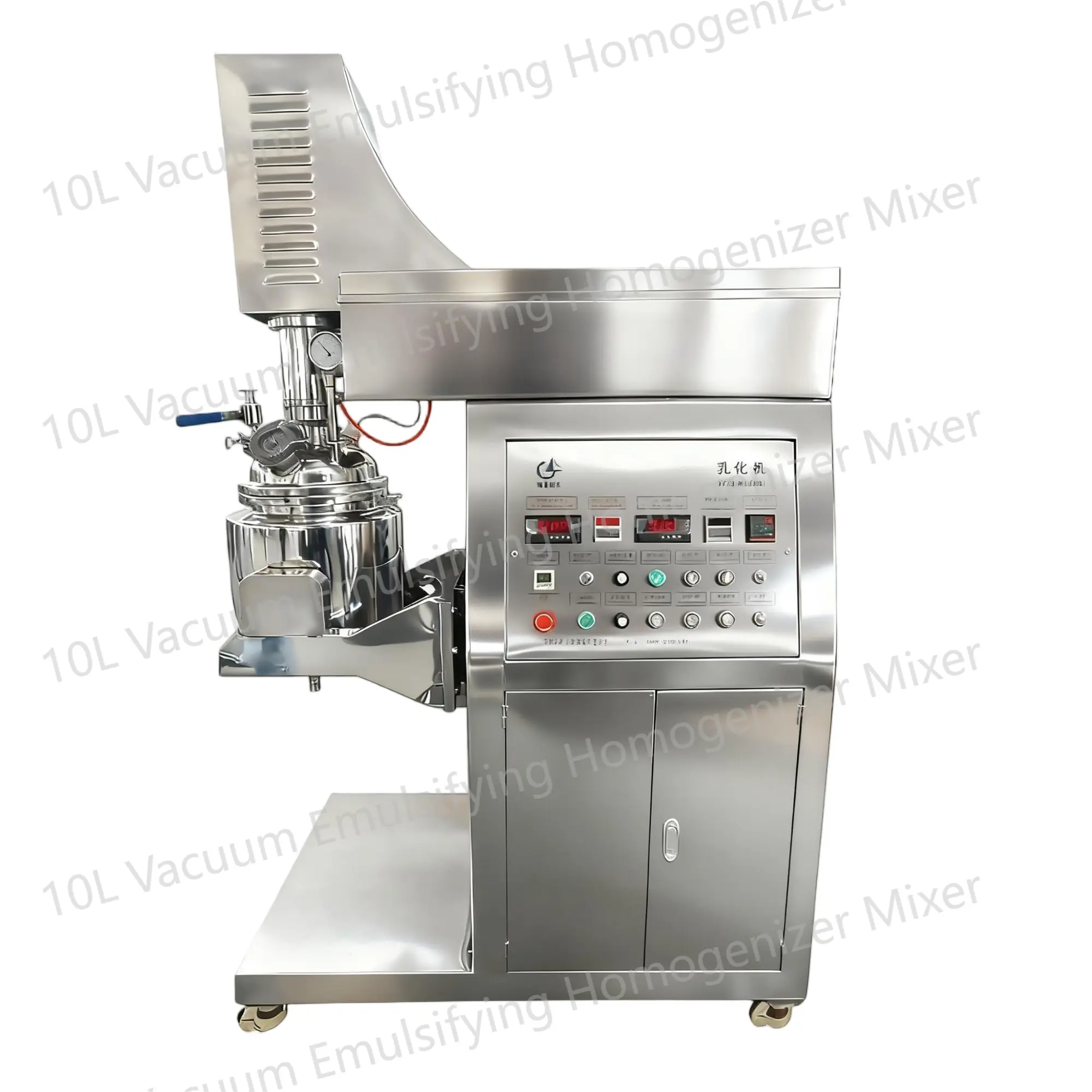 10L Vacuum Emulsifying Homogenizer Mixer
10L Vacuum Emulsifying Homogenizer MixerThe 10L Vacuum Emulsifying Mixer is a device used for emulsifying and mixing various substances in a vacuum environment. It is commonly used in industries such as food, cosmetics, and pharmaceuticals.


 English
English Russian
Russian French
French Spanish
Spanish Portuguese
Portuguese Korean
Korean Japanese
Japanese Thai
Thai